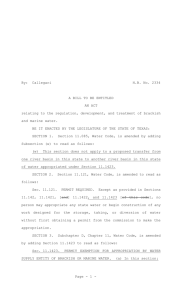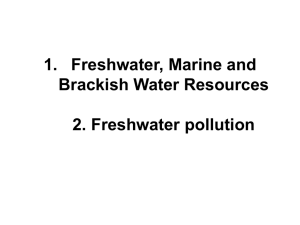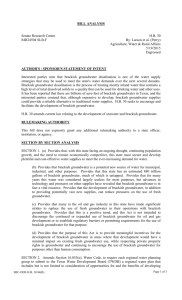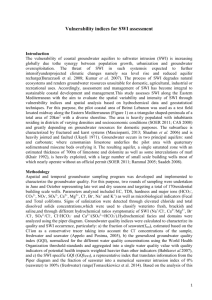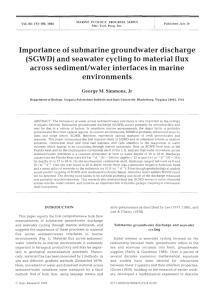Terrestrial Brackish Goundwater Discharge Associated with
advertisement
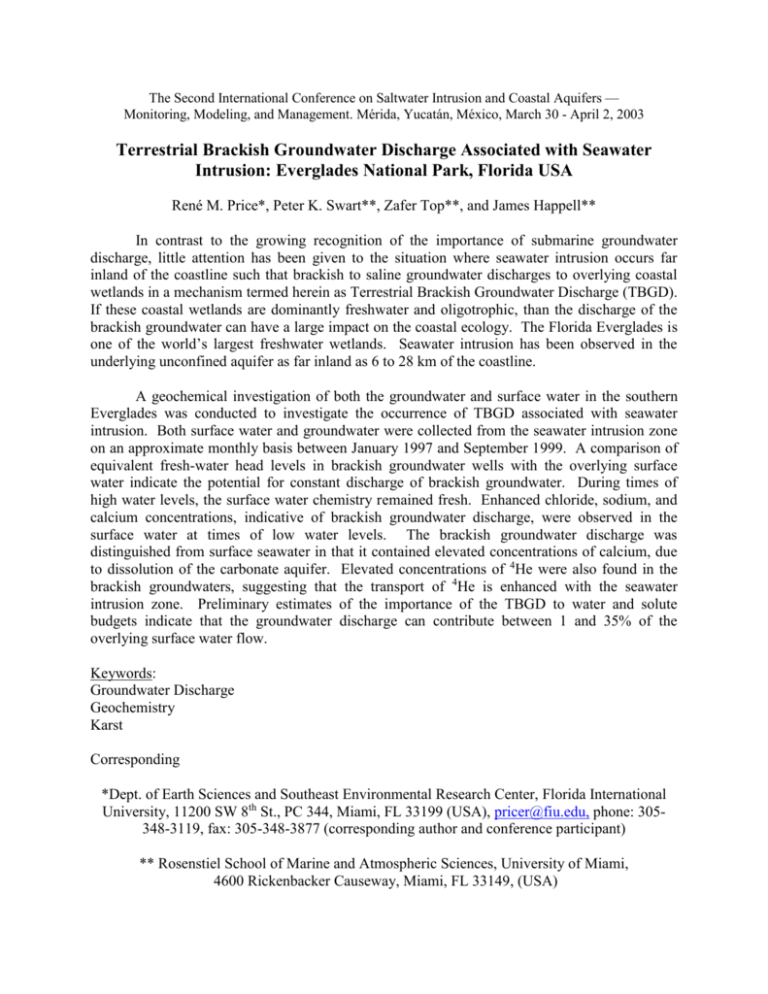
The Second International Conference on Saltwater Intrusion and Coastal Aquifers — Monitoring, Modeling, and Management. Mérida, Yucatán, México, March 30 - April 2, 2003 Terrestrial Brackish Groundwater Discharge Associated with Seawater Intrusion: Everglades National Park, Florida USA René M. Price*, Peter K. Swart**, Zafer Top**, and James Happell** In contrast to the growing recognition of the importance of submarine groundwater discharge, little attention has been given to the situation where seawater intrusion occurs far inland of the coastline such that brackish to saline groundwater discharges to overlying coastal wetlands in a mechanism termed herein as Terrestrial Brackish Groundwater Discharge (TBGD). If these coastal wetlands are dominantly freshwater and oligotrophic, than the discharge of the brackish groundwater can have a large impact on the coastal ecology. The Florida Everglades is one of the world’s largest freshwater wetlands. Seawater intrusion has been observed in the underlying unconfined aquifer as far inland as 6 to 28 km of the coastline. A geochemical investigation of both the groundwater and surface water in the southern Everglades was conducted to investigate the occurrence of TBGD associated with seawater intrusion. Both surface water and groundwater were collected from the seawater intrusion zone on an approximate monthly basis between January 1997 and September 1999. A comparison of equivalent fresh-water head levels in brackish groundwater wells with the overlying surface water indicate the potential for constant discharge of brackish groundwater. During times of high water levels, the surface water chemistry remained fresh. Enhanced chloride, sodium, and calcium concentrations, indicative of brackish groundwater discharge, were observed in the surface water at times of low water levels. The brackish groundwater discharge was distinguished from surface seawater in that it contained elevated concentrations of calcium, due to dissolution of the carbonate aquifer. Elevated concentrations of 4He were also found in the brackish groundwaters, suggesting that the transport of 4He is enhanced with the seawater intrusion zone. Preliminary estimates of the importance of the TBGD to water and solute budgets indicate that the groundwater discharge can contribute between 1 and 35% of the overlying surface water flow. Keywords: Groundwater Discharge Geochemistry Karst Corresponding *Dept. of Earth Sciences and Southeast Environmental Research Center, Florida International University, 11200 SW 8th St., PC 344, Miami, FL 33199 (USA), pricer@fiu.edu, phone: 305348-3119, fax: 305-348-3877 (corresponding author and conference participant) ** Rosenstiel School of Marine and Atmospheric Sciences, University of Miami, 4600 Rickenbacker Causeway, Miami, FL 33149, (USA)






